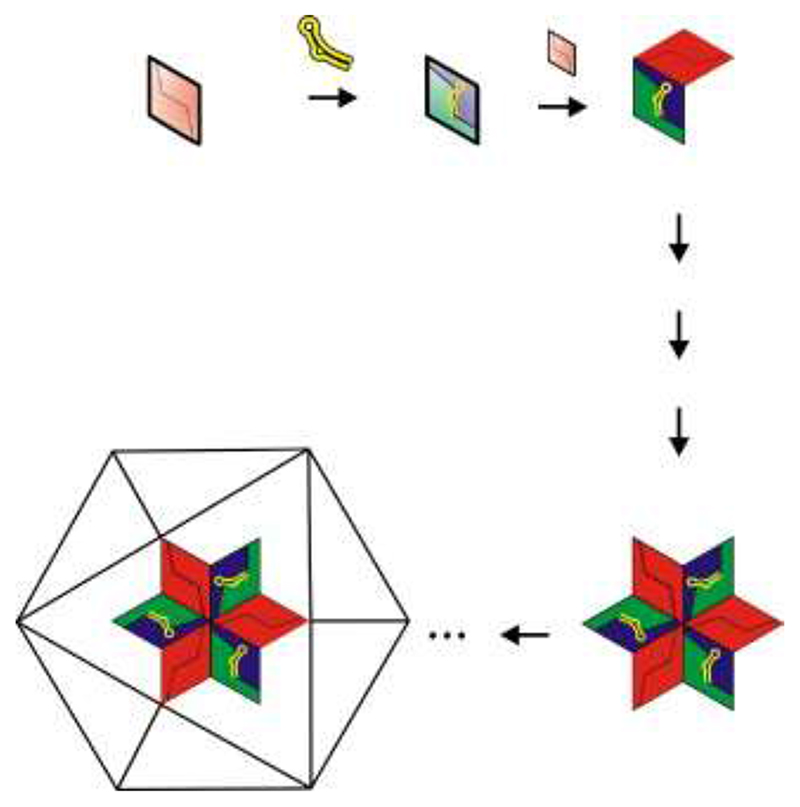Figure 6.
Model for the initiation of T = 3 capsid assembly. A pair of chemically equivalent (C/C-like) subunits in solution (top left, shaded pink) binds a TR RNA, resulting in a conformational switch into an A/B-like asymmetric dimer (shaded green and blue). This complex binds an additional C/C-like dimer, creating the first higher-order intermediate on the pathway to capsid formation. A variety of subpathways involving the addition of coat protein dimers (arrows) can then generate the major assigned intermediate encompassing the first threefold axis of the virus particle. We have mass assignments for all the cartoon species shown in the diagram, as well as a number of components that may be in the subassembly pathway, such as 2[CP2:TR]+2CP2 & 3[CP2:TR]+2CP2+CP. These latter species are not always present in the reactions and when present are in trace amounts.

